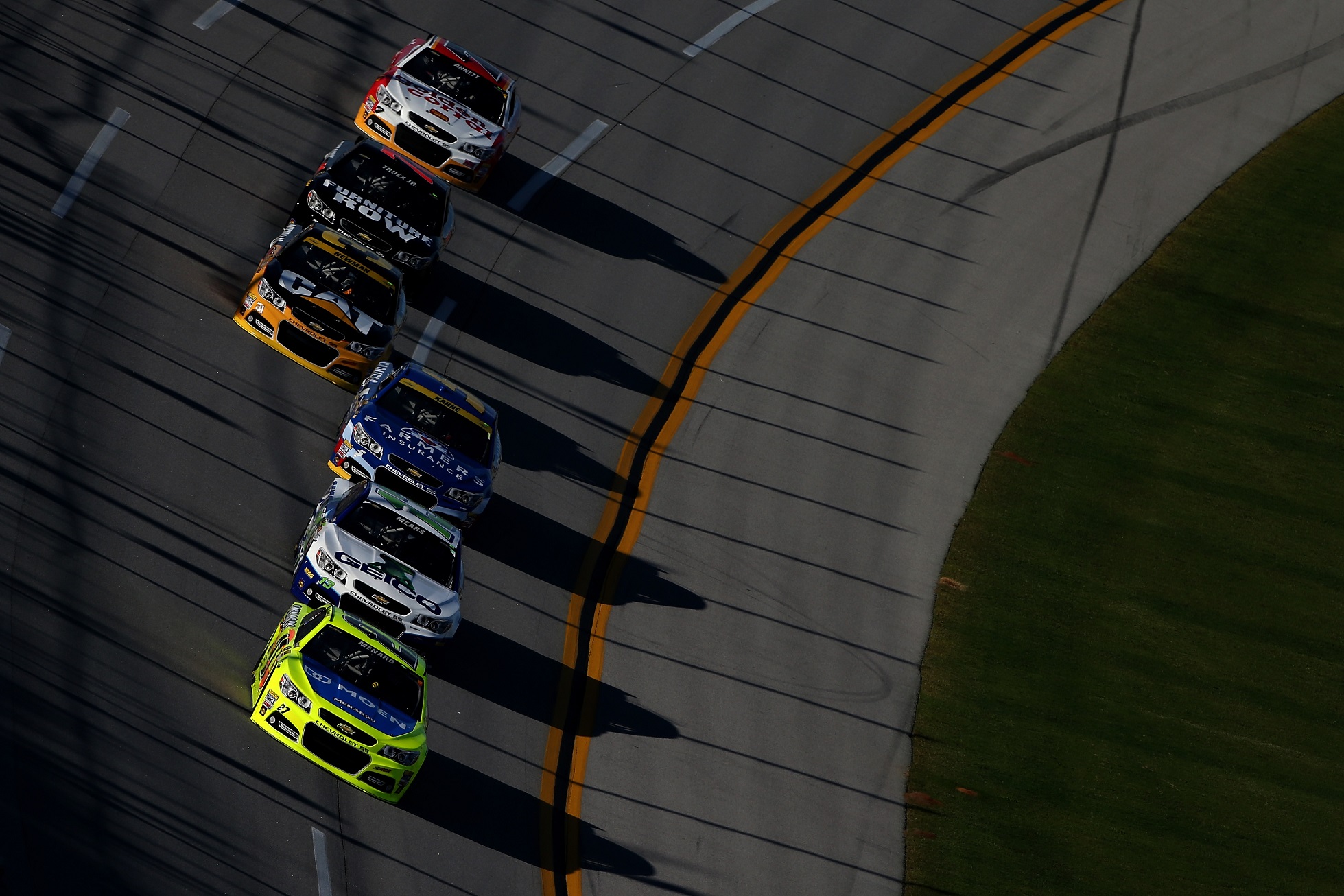
Photo Credit: Todd Warshaw/Getty Images
On September 4, NASCAR announced changes to the qualifying format at Talladega Superspeedway. The first round of qualifying would now be divided into two groups with drivers being selected by random draw. Each group would only have five minutes to complete its run.
The reason for this change was to elevate the excitement for fans. “This revision in national series qualifying should be more exciting for our fans,” said Robin Pemberton, NASCAR senior vice president of competition and racing development. “It will feature a more accelerated pace, provide greater opportunity for team strategy to come into play and it should more closely resemble actual racing conditions.”
This theory sounded good on paper. There was one thing that NASCAR did not consider – the team strategy of, once again, waiting until the last minute to take to the track.
One would assume, however, that on a track where it takes almost 50 seconds to complete a lap at full speed, and an additional thirty seconds to get from a standstill at the end of pit road to the start/finish line, that the teams would not wait until the last possible second of the five minute clock to leave pit road. Each team trying to wait and not be the first off pit road.
NASCAR likely expected the teams to hit the track as soon as possible, get up to speed in a pack, then jockey for a position that would give a driver the best “pull” near the end to secure their best lap. Again, this sounded good on paper.
In what has been called one of the most bizarre qualifying sessions ever, several marquee teams waited too long and never got a full speed lap. One major team, Roush-Fenway Racing, seeing its driver, Ricky Stenhouse Jr., not make the field and have to pack up and go home.
Several drivers in Chase contention also flirted with disaster. Jeff Gordon, Kyle Busch, Kevin Harvick, Joey Logano, Denny Hamlin and Tony Stewart all turned in sub-par laps that were more than seven mph slower than the pole speed set by Brian Vickers.
The other side of the coin was that some of the smaller teams qualified very well. Michael McDowell, Michael Annett, Travis Kvapil and Terry Labonte in his final start, all will start inside the top-12.
Of course in the wake of this strange set of circumstances, the critics on social media were in full force. Tweets and Facebook posts bashing NASCAR were popping up everywhere. There were even some members of the major media outlets that cover NASCAR being critical of the sanctioning body. One driver posted on this in Twitter – “Cars went home today that should never go home” That driver qualified uncharacteristically in the top ten, I doubt he offered up his position to those drivers who shouldn’t have went home.
Therefore, the question of the day became – Was it NASCAR’s fault? Or was it the driver’s fault for not going out early enough to get a good lap?
This seems to happen every time something doesn’t go as planned. NASCAR becomes the scapegoat for everything that goes wrong. NASCAR has one responsibility in regards to designing procedures and programs. To maintain its integrity, it must provide equal opportunity to every team. NASCAR consistently provides those opportunities. Rules are enforced equally, even when the compassionate side of us wants to give someone a break or an advantage.
The Carl Long penalty comes to mind. NASCAR penalized Carl Long for an engine that did not meet the requirements of the rules. Fans became irate that NASCAR would penalize a smaller team with a small budget like Long’s team. Adding to the fury was the fact that Long was the little guy just trying to make it. We all love a story of the David vs. Goliath and we all like to pull for David. Fans ask for “black and white” rules, eliminating gray area, then complain when NASCAR enforces those rules.
This is what we have again this weekend at Talladega. This time, however, it’s all the teams vs NASCAR. Fans are upset, most likely because their favorite driver did not qualify well, at NASCAR for “creating a situation” that led to some teams not qualifying well, and some not making the field.
NASCAR provided ample time for every team to make a competitive qualifying lap. It was the teams who decided play games and wait until the last possible second to go. The drivers who qualified poorly or did not execute their strategy properly have no one to blame but themselves.
Brian Vickers and Jimmie Johnson had no trouble. They qualified on the front row. Brad Keselowski and Kasey Kahne also made the final round of qualifying.
This mentality that we have to always find someone else to blame for our mistakes is frustrating. At what point do we take responsibility for our own actions? This is professional sports and the sanctioning body should not have to hold the competitors hands in every step of competition.
If a fans favorite driver qualified poorly, that fan should be mad at that driver, not NASCAR. Every team, knew the rules before it started, they chose a strategy that did not work. It is a simple as that.
NASCAR may very well change this format again before the next race at Talladega, but if it does not, drivers and teams will be sure to devise a strategy that will permit them to post a good lap – guaranteed.
NASCAR debacle? Hardly. The debacle came from atop the pit box and in the driver’s seats.





RT @OnPitRoad_: @talladegasupers Qualifying… @NASCAR Debacle or Driver Mistakes?: My take: http://t.co/e8x08DOmwa By: @rogerholtsclaw
RT @OnPitRoad_: @talladegasupers Qualifying… @NASCAR Debacle or Driver Mistakes?: My take: http://t.co/e8x08DOmwa By: @rogerholtsclaw